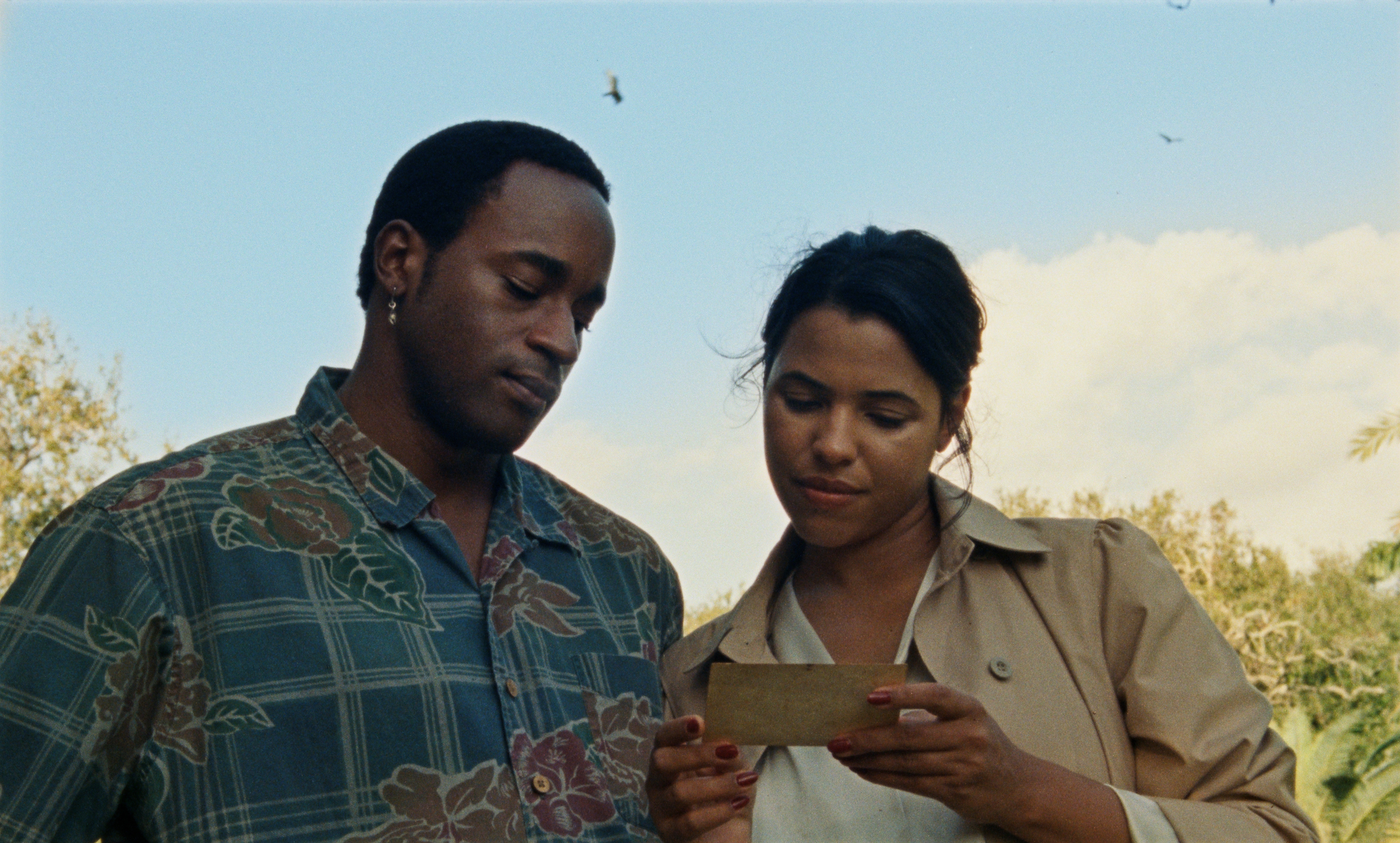In a dark room, an oscillating fan turns the humid air; a jazz record spins from an old turntable. A woman sits at a table, silent, as her cigarette lights the planes of her face.
Unapologetically ruminative and image-rich, The Ballad of Suzanne Césaire is a daring, dreamlike debut feature for visual artist and filmmaker Madeleine Hunt-Ehrlich. The taut 75-minute film rejects linear narrative for a lush, fragmented depiction of the time and topography that informed the Afro-Surrealist’s brief but intense period of ardent activist writing.
“We are making a movie about an artist who wished to be forgotten,” acknowledges an actress (Zita Hanrot) playing an actress playing Suzanne Césaire, the so-called “Black Panther of Négritude” — the anti-colonial literary, cultural, and political movement that flowered among Black Francophone intellectuals in the 1930s. Merging the process of making the film with snippets of Suzanne’s imagined life and actual words, The Ballad blurs distinctions between past and present, lost and found. Ants swarm across a page of typed text. A sudden storm disrupts the diegesis.
Known for redressing elisions in the historical record of the Black diaspora, Hunt-Erhlich flouts the conventional biopic at every turn, at once celebrating Césaire’s roving, riveting mind and revealing the impossibility of ever truly knowing the reason she quit writing. In doing so, Hunt-Ehrlich probes the limitations of art itself — her own alongside her heroine’s Surrealist writings, only seven of which saw publication.
First published in the literary journal Tropiques, which she co-founded with her husband, poet and politician Aimé Césaire (played by Motell Foster), Suzanne’s essays reflect her ecological consciousness and fierce anti-assimilationist sentiments. Read in French and English throughout the film, excerpts of Suzanne’s manifestos underscore her theoretical rigor and penchant for the poetic. While soon eclipsed by Aimé’s fame, for the time that they were exiled in the Caribbean during World War II, Suzanne was treated as an intellectual equal — at least that’s how The Ballad presents the power couple.
Friends with French Surrealist André Breton (Josué Gutierrez), who visits them in Martinique, Aimé and Suzanne share a sensual spark onscreen fanned by mutual respect of each other’s brilliance. Hanrot not only bears a striking facial resemblance to Suzanne, but embodies a quiet melancholy that feels plausible for a writer of any era. Foster and Gutierrez, with their American accents and mannerisms, are more of a stretch.

Suzanne had six children during her marriage to Aimé, and the duties of mothering — along with those of being a wife to such a prominent figure — may have been why she opted to stop writing after Tropiques ceased publication in 1945. In certain scenes, Hanrot’s real-life baby appears in Suzanne’s vicinity — pushed in a modern stroller or lying on a picnic blanket — as if to suggest the ongoing difficulty of leading a creative life while also raising a family.
Shot on 16mm, The Ballad exudes a tactile, nostalgic quality in keeping with the films its characters would have seen in the 1940s. The languid, meditative nature of many shots invites us to ponder just how much we know — or, more likely, don’t know — about the women, especially women of color, who founded artistic and political movements long before the Women’s Movement of the late 20th century.
The Ballad of Suzanne Césaire is currently screening at select film festivals.

